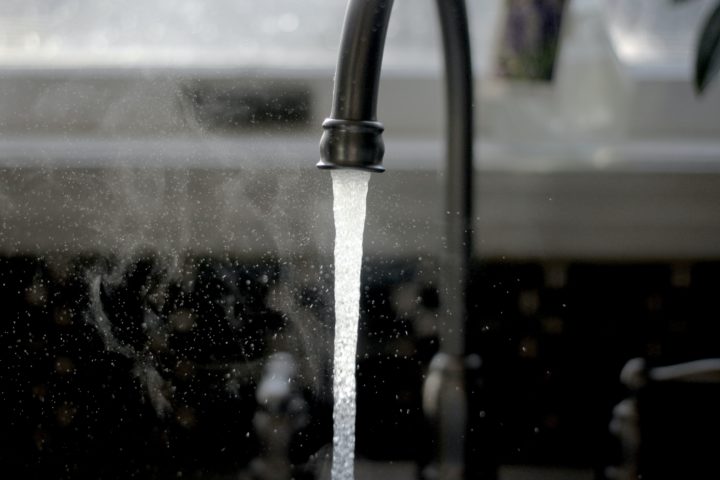There are many different types of home water filtration systems available on the market today. Some are more expensive than others, some are very easy to install, while others require some plumbing skills, especially those whole house water filters. Here are some of the most popular types of filters on the market for you below so that you can determine which system best suits your needs and budget.
Reverse Osmosis Filters
Reverse osmosis (RO) is a type of filtration that involves forcing tap or well water through a reverse-osmosis membrane and into a separate holding tank where contaminants are caught by an activated carbon filter.
Reverse osmosis (RO) filtration systems are approximately twice as expensive as the other types of filters that remove arsenic, fluoride, and trihalomethanes. A reverse osmosis filter is able to filter out 90 percent of the dissolved solids in water. This means it is capable of removing sodium, nitrates, sulfate salts, and organic matter such as bacteria and viruses. RO filters also reduce cyst levels by 85-98 percent. Reverse osmosis filters can be purchased at most hardware or home improvement stores for $250-$500 per unit depending on whether you choose a countertop or under-sink model.
Carbon Block Water Filters
Carbon block filters are another popular type of home water filtration system. Carbon-block water filters remove chlorine, taste, and odour from tap water using carbon blocks. The carbon is chemically treated to be able to absorb impurities in the water.
They can remove up to 95 percent of microorganisms (parasites like giardia) that cause disease if present in the source water, as well as some industrial chemicals like solvents (paint thinners), herbicides, and pesticides
One disadvantage is that carbon block systems do not soften your water. This is important because as the folks at this link explain, there are disadvantages to using hard water, like limescale buildup on appliances, clothes don’t get fully clean, water spots left on dishes and faucets, hard water may cause appliances to be less efficient, soap scum buildup in showers and bathtubs, and exacerbates eczema symptoms and dry skin.
Chlorine Removal Water Filters
Many people who drink filtered tap or well water do so because they want to remove excess levels of chlorine from their drinking water. Chlorine can combine with organic compounds found in surface waters and groundwaters to form dangerous substances called trihalomethanes (THMs). These THMs are carcinogenic.
There are two types of chlorine removal systems on the market today: granular-activated carbon (GAC) and catalytic carbon block.
Granular Activated Carbon (GAC)
GAC filters are inexpensive and effective at removing chlorine, taste, and odour from water. They are bulky in size compared to other types of systems available today. The only disadvantage with GAC filters is that they must be replaced often because the activated carbon quickly gets clogged up when filtering out chlorine contaminants in water which reduces the flow rate of water through the system.
Catalytic Carbon Block
Chlorine removal carbon block filters use catalytic carbon technology to remove chlorine from drinking water instead of granular activated carbon (GAC). The benefit of the carbon block system is that it does not get clogged up as easily as GAC filters and can be used for longer before having to replace the cartridge.
Catalytic carbon block cartridges come in a variety of shapes and sizes which means they can fit easily on your kitchen countertop or under-sink, and on some models, you can also choose how long you would like the filter to last (1 month, 2 months, 3 months, etc.)
Distillation
Distillation is the process of boiling water to produce clean steam that is eventually converted back to liquid water in a clean container. The resulting steam then rises, leaving behind most pollutants that were once dissolved in the water as it boiled off into the air. Steam carries these impurities with it when it leaves the boiler system and is captured in a clean container for easy disposal before being condensed back into pure liquid water which can be used for drinking and other purposes.
A disadvantage of the distillation method is that it does not remove heavy metals, fluoride, viruses, bacteria, or drugs. Distilled water also tastes flat once you have accustomed your taste buds to filtered water.
It may not be possible to find a pure form of distilled water at your local grocer since it lacks minerals found in natural waters which are good for your health and body functions. However, there are distilled waters available commercially that contain minerals like potassium added back into them. These waters can be an excellent alternative to drinking water for people who need to limit their intake of sodium and chloride. One such supplier is Golyath, and though not suitable for drinking water you can use Golyath distilled water at home and commercially for autoclave’s, humidifier supply, glass cleaning, printing solutions, fish tanks, battery maintenance, prevention of furring and scale formation in irons, and more.
The best water filtration method to choose is the one that matches your needs and budget. Whether it’s a whole house water purification system or an under-the-sink filtration system, be sure to fully research the pros and cons of each type of water filter before making your choice. Utilize this guide to help you explore what type of system works best for you!
















